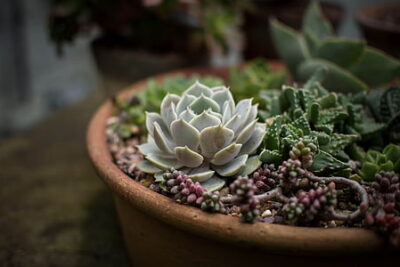
Fascinating Facts: Unveiling the Wonders of Succulents
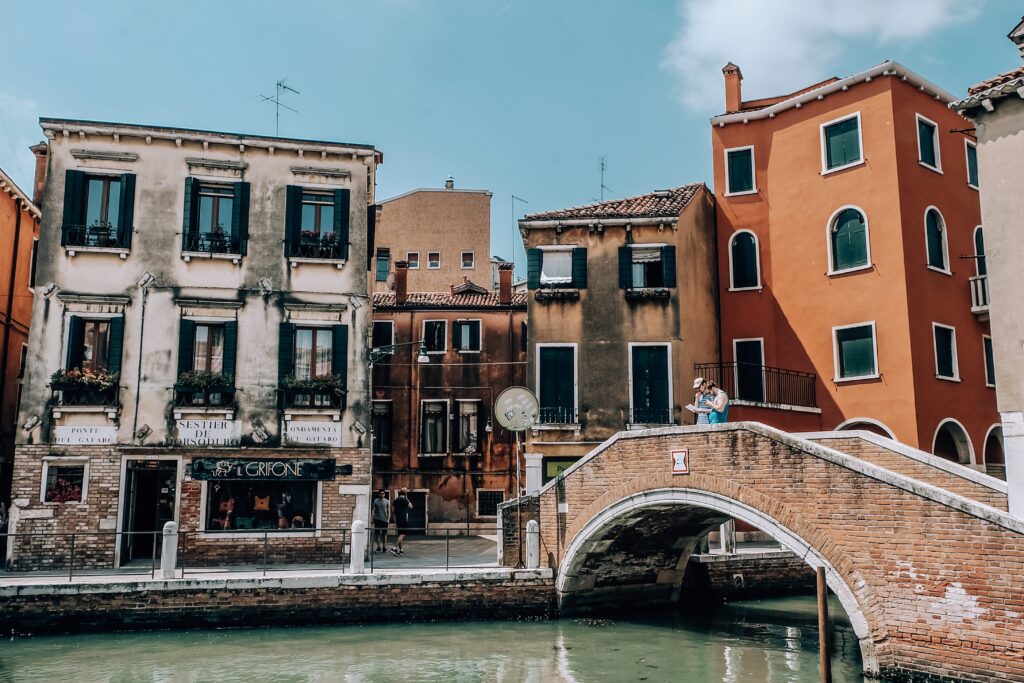
Succulents, with their unique and captivating beauty, have become increasingly popular in recent years. These versatile plants are known for their ability to store water in their leaves, stems, and roots, allowing them to survive in arid conditions. Succulents come in a wide range of shapes, sizes, and colors, making them a favorite among plant enthusiasts and collectors.
We will delve into the fascinating world of succulents and explore their remarkable features and adaptations. We will discuss the various types of succulents, their growth habits, and the environments in which they thrive. Additionally, we will uncover interesting facts about succulents, such as their ability to propagate through leaf cuttings, their use as natural remedies, and their symbolism in different cultures. Whether you are a seasoned succulent lover or new to the world of plants, this article will provide you with a deeper understanding and appreciation for these incredible botanical wonders.
- Succulents are low-maintenance plants that require little water
- They come in various shapes, sizes, and colors, adding beauty to any space
- Succulents are excellent air purifiers, improving indoor air quality
- They can be propagated easily through leaf or stem cuttings
- Succulents are resilient and can adapt to different climates and environments
- They make great gifts for plant lovers or those new to gardening
- Succulents are known for their ability to store water in their leaves, stems, or roots
- They can be planted in a variety of containers, including vintage pots or terrariums
- Succulents are versatile and can be used in various DIY projects, such as wreaths or centerpieces
- They are popular for their unique and interesting shapes, such as rosettes or spiky forms
- Frequently Asked Questions
Succulents are low-maintenance plants that require little water
Succulents are a diverse group of plants that have adapted to survive in arid conditions. One of the most fascinating facts about succulents is their ability to store water in their leaves, stems, and roots, allowing them to thrive in environments with limited water availability.
Unlike other plants that need frequent watering, succulents are designed to withstand long periods of drought. Their thick, fleshy leaves act as water reservoirs, enabling them to survive in dry climates where rainfall is infrequent.
This ability to store water also makes succulents excellent choices for those who have busy schedules or are new to gardening. They require less frequent watering compared to other plants, making them low-maintenance options for both indoor and outdoor gardens.
However, it's important to note that even though succulents are drought-tolerant, they still need some water to thrive. The key is to strike a balance and avoid overwatering, as excessive moisture can lead to root rot and other issues.
If you're unsure about how often to water your succulents, a general rule of thumb is to allow the soil to dry out completely between waterings. You can test the moisture level by inserting your finger into the soil – if it feels dry up to the first knuckle, it's time to water. Remember, it's better to underwater than to overwater succulents.
 Find the Perfect Cactus and Succulent for Sale Nearby
Find the Perfect Cactus and Succulent for Sale NearbyOverall, the low-maintenance nature of succulents, coupled with their ability to survive with minimal water requirements, makes them an ideal choice for both experienced and novice gardeners.
They come in various shapes, sizes, and colors, adding beauty to any space
Succulents are a diverse group of plants that come in a wide range of shapes, sizes, and colors. From the smallest, delicate rosettes to the larger, sculptural varieties, succulents have the ability to add a touch of beauty to any space.
Their unique adaptations enable them to thrive in harsh conditions
One of the most fascinating aspects of succulents is their ability to survive in arid and harsh environments. Their thick, fleshy leaves and stems are designed to store water, allowing them to withstand long periods of drought. This adaptation not only helps them survive in their natural habitats but also makes them excellent choices for low-maintenance indoor plants.
They are masters of self-propagation
Succulents have an incredible ability to reproduce and propagate themselves. Many varieties can grow new plants from their leaves or stems, making them easy to propagate and share with friends and family. This process involves removing a leaf or cutting from the parent plant, allowing it to callus over, and then planting it in well-draining soil. Before you know it, you'll have a new succulent plant to care for!
They have a long history and cultural significance
Succulents have been around for millions of years and have played a significant role in various cultures throughout history. In some regions, succulents are considered symbols of endurance, resilience, and protection. They have been used in traditional medicine, as food sources, and even for spiritual purposes. Their unique appearance and adaptability have made them beloved plants all around the world.
They offer numerous health benefits
Aside from being aesthetically pleasing, succulents also offer several health benefits. They are known to improve indoor air quality by absorbing toxins and releasing oxygen. Additionally, caring for succulents can be a therapeutic and stress-relieving activity. The act of nurturing and watching them grow can bring a sense of calm and satisfaction.
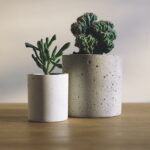 Is Succulent Studios Worth It? Read Reviews to Find Out!
Is Succulent Studios Worth It? Read Reviews to Find Out!They are versatile and can be grown in various environments
Whether you have a spacious garden, a tiny apartment, or an office cubicle, there's a succulent that can thrive in your space. Their versatility and ability to adapt to different growing conditions make them ideal for both indoor and outdoor cultivation. From hanging baskets to terrariums, succulents can be showcased in a multitude of creative ways, adding a touch of greenery to any setting.
They are low-maintenance and forgiving plants
If you've struggled with keeping plants alive in the past, succulents might just be the perfect solution for you. These resilient plants are incredibly forgiving and require minimal care. With their water-storing abilities, they can tolerate infrequent watering and can withstand periods of neglect. As long as you provide them with enough light and well-draining soil, they'll thrive with minimal effort.
As you can see, succulents are not only visually stunning but also fascinating plants. Their unique adaptations, cultural significance, and numerous health benefits make them an excellent choice for plant enthusiasts of all levels. So why not bring some succulent wonders into your life and watch as they captivate you with their beauty and resilience?
Succulents are excellent air purifiers, improving indoor air quality
Succulents are not only beautiful additions to any indoor space, but they also have the incredible ability to purify the air around them. These fascinating plants are natural air purifiers, making them a perfect choice for those looking to improve the air quality in their homes or offices.
One of the main reasons why succulents are such effective air purifiers is their unique ability to remove toxins from the air. They have the remarkable ability to absorb harmful pollutants, such as formaldehyde, benzene, and xylene, which are commonly found in household items like cleaning supplies, furniture, and carpets.
These toxins can have detrimental effects on our health, causing respiratory problems, allergies, and even more serious conditions in the long run. By having succulents in your indoor space, you can significantly reduce the levels of these harmful substances, creating a healthier and cleaner environment.
 Get ready to crack up with these hilarious succulent quotes!
Get ready to crack up with these hilarious succulent quotes!Succulents achieve this air-purifying effect through a process called photosynthesis. During photosynthesis, plants absorb carbon dioxide and release oxygen, effectively filtering the air and removing pollutants in the process. Additionally, succulents also release moisture, which can help to increase humidity levels in dry indoor environments.
Not only do succulents purify the air, but they also possess the ability to absorb and neutralize electromagnetic radiation emitted by electronic devices such as laptops, computers, and smartphones. This is particularly beneficial in today's digital age, where we are constantly exposed to these devices and their potentially harmful effects.
To maximize the air-purifying benefits of succulents, it is recommended to have several plants placed strategically throughout your indoor space. Different succulent varieties have varying abilities to purify the air, so having a diverse collection can ensure a more comprehensive air purification process.
Some popular succulent varieties known for their air-purifying qualities include the Snake Plant (Sansevieria), Aloe Vera, and the Spider Plant (Chlorophytum comosum). These plants are not only aesthetically pleasing but also highly effective in removing toxins and improving the overall air quality.
Succulents are not only visually appealing but also bring numerous health benefits to our indoor spaces. By acting as natural air purifiers, succulents can help us breathe cleaner, healthier air while adding a touch of green to our surroundings. So, why not consider adding some succulents to your indoor space today?
They can be propagated easily through leaf or stem cuttings
Succulents, with their unique ability to store water in their leaves and stems, have become increasingly popular among plant enthusiasts. One fascinating aspect of succulents is their ability to be propagated easily through leaf or stem cuttings.
 Licensing Requirements for Selling Succulents: What You Need to Know
Licensing Requirements for Selling Succulents: What You Need to KnowLeaf cuttings: Taking a leaf cutting from a mature succulent is a simple and effective way to propagate new plants. Carefully remove a healthy leaf from the parent plant, ensuring that it is intact and undamaged. Allow the leaf to dry for a couple of days until a callus forms at the cut end. Then, place the leaf on well-draining soil and mist it lightly with water. Within a few weeks, roots will start to grow from the bottom of the leaf, followed by the emergence of a new plant.
Stem cuttings: Another method of propagation involves taking stem cuttings from the parent plant. Select a healthy stem and use a sharp, clean knife or shears to make a clean cut just below a node. Remove any lower leaves, leaving a few at the top. Allow the cut end to dry for a day or two to prevent rotting, and then place the cutting in a well-draining soil mix. Mist the cutting regularly to maintain moisture. Over time, roots will develop, and a new succulent plant will begin to grow.
Both leaf and stem cuttings offer an exciting opportunity to expand your succulent collection and share plants with friends and family. Plus, witnessing the growth and development of new plants from these cuttings can be a truly rewarding experience!
Succulents are resilient and can adapt to different climates and environments
One of the most fascinating aspects of succulents is their remarkable resilience and ability to adapt to various climates and environments. These amazing plants have evolved to thrive in arid regions where water is scarce, making them the perfect choice for those with a less-than-green thumb or living in dry climates.
Succulents have specialized leaves, stems, or roots that store water, allowing them to survive in harsh conditions. These water-storing structures give succulents their unique appearance, with thick and fleshy leaves or stems that can hold a significant amount of moisture. This adaptation enables them to withstand long periods of drought by utilizing the stored water when necessary.
Furthermore, succulents have developed efficient mechanisms for water absorption and conservation. Their roots are shallow and widespread, allowing them to capture moisture from the surface quickly. Additionally, they have a specialized tissue called "crassulacean acid metabolism" (CAM), which allows them to open their stomata (tiny openings on the leaf surface) at night to minimize water loss from evaporation during the day.
With their ability to adapt and survive in different climates, succulents can be found in a wide range of environments worldwide. From the scorching deserts of Africa to the chilly mountains of South America, these resilient plants have managed to conquer diverse habitats.
 Exploring Trendy Succulent Slang on Urban Dictionary
Exploring Trendy Succulent Slang on Urban DictionaryWhether you live in a dry desert or a humid coastal area, there is a succulent that will thrive in your environment. Their adaptability and low-maintenance nature make them an ideal choice for both indoor and outdoor gardening.
So, if you're looking for a plant that can withstand the elements and add a touch of natural beauty to your surroundings, consider bringing succulents into your life. You'll be amazed by their ability to thrive and flourish in even the most challenging conditions!
They make great gifts for plant lovers or those new to gardening
Whether you're looking for a present for a green-thumbed friend or trying to introduce someone to the world of gardening, succulents are an excellent choice. These hardy plants come in a variety of shapes, sizes, and colors, making them visually appealing to any recipient.
Not only are succulents aesthetically pleasing, but they also require minimal care and maintenance. Their ability to store water in their leaves and stems allows them to thrive in arid conditions, making them perfect for busy individuals or those without a green thumb.
When offering succulents as gifts, you can get creative with their presentation. Consider placing them in unique containers such as colorful pots, vintage teacups, or even hanging glass terrariums. Adding a personalized note or care instructions is also a thoughtful touch.
By gifting succulents, you not only provide a beautiful plant but also encourage the recipient to embrace nature and develop a love for gardening. It's a present that keeps on giving!
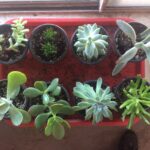 Join a Local Succulent Club and Connect with Fellow Plant Lovers
Join a Local Succulent Club and Connect with Fellow Plant LoversSucculents are known for their ability to store water in their leaves, stems, or roots
Succulents are a group of plants that have developed a unique adaptation to survive in arid environments. One of the most fascinating facts about succulents is their ability to store water in their leaves, stems, or roots. This adaptation allows them to withstand long periods of drought and thrive in conditions where other plants would struggle to survive.
Leaf Storage: Some succulents, such as the popular Echeveria or Aloe vera, store water in their fleshy leaves. These leaves are thick and juicy, acting as reservoirs that can hold a significant amount of water. The stored water sustains the plant during times of drought, enabling it to survive in harsh environments.
Stem Storage: Other succulents, like the iconic Cactus, store water in their stems. Their thick, fleshy stems are capable of storing large amounts of water, acting as natural water tanks. The stem's ability to store water allows the plant to survive in arid regions where rainfall is scarce and infrequent.
Root Storage: Some succulents, such as the Haworthia or Agave, store water in their roots. These plants have specialized root systems that can absorb and store water efficiently. The roots act as underground reservoirs, allowing the plant to access water during dry periods when the soil surface is devoid of moisture.
This remarkable adaptation of water storage not only helps succulents survive in challenging environments but also gives them their unique appearance. Their plump and swollen leaves, stems, or roots are not only visually appealing but serve as a survival mechanism in water-scarce conditions.
The Benefits of Succulents' Water Storage Adaptation
The ability of succulents to store water provides them with several advantages:
 Alien Cuisine: Exploring E.T.'s Edible Fingers
Alien Cuisine: Exploring E.T.'s Edible Fingers- Drought Tolerance: Succulents can survive extended periods without water, making them highly resistant to drought conditions.
- Water Efficiency: Their water storage adaptation allows them to make the most of the limited water resources available in their environment.
- Low Maintenance: Succulents require less frequent watering compared to other plants, making them an ideal choice for busy individuals or those with limited access to water.
- Survivability in Harsh Environments: Thanks to their water storage ability, succulents can thrive in environments with high temperatures, low humidity, and minimal rainfall.
Overall, the remarkable ability of succulents to store water in their leaves, stems, or roots is a testament to their resilience and adaptability. These fascinating plants continue to captivate plant enthusiasts worldwide, adding beauty and charm to gardens, homes, and even office spaces.
They can be planted in a variety of containers, including vintage pots or terrariums
Succulents are incredibly versatile plants that can be planted in a variety of containers, adding a touch of natural beauty to any space. Whether you prefer the vintage charm of old pots or the modern elegance of terrariums, succulents can thrive and flourish in almost any type of container.
Vintage pots are a popular choice for succulent enthusiasts who appreciate the beauty of aged and weathered containers. These pots can add a rustic and nostalgic touch to your indoor or outdoor decor. The worn-out appearance of vintage pots creates a beautiful contrast with the vibrant and vibrant colors of succulents.
If you prefer a more contemporary look, terrariums are an excellent option. These glass containers create a miniature ecosystem for your succulents to thrive in. The transparent walls allow you to observe the intricate details of the plants while adding a modern and stylish aesthetic to your space.
When planting succulents in vintage pots or terrariums, it's essential to consider their specific needs. Succulents thrive in well-draining soil, so make sure to choose a pot or terrarium with drainage holes or create a layer of gravel at the bottom to prevent water from pooling. Additionally, succulents prefer bright, indirect sunlight, so place your containers near a window or in a well-lit area.
Overall, the beauty and versatility of succulents make them the perfect choice for planting in various containers. Whether you opt for vintage pots or modern terrariums, these plants are sure to add a touch of natural elegance to your home or garden.
 Are Horse Teeth Succulent? Exploring the Palatability Myth
Are Horse Teeth Succulent? Exploring the Palatability MythSucculents are versatile and can be used in various DIY projects, such as wreaths or centerpieces
Succulents, with their unique and captivating appearance, have become increasingly popular in the world of DIY crafts. These hardy plants not only add a touch of natural beauty to any space but also lend themselves well to a wide range of creative projects.
One of the most popular uses for succulents in DIY projects is making wreaths. Whether you're looking to adorn your front door or create a stunning centerpiece, succulent wreaths are a fantastic option. The thick, fleshy leaves of succulents make them easy to work with, allowing you to attach them securely to a wreath base. With a variety of shapes, sizes, and colors to choose from, you can create a wreath that perfectly matches your style and preferences.
In addition to wreaths, succulents can also be incorporated into centerpieces for various occasions. Whether it's a wedding, a dinner party, or a simple gathering, succulent centerpieces can add a unique and elegant touch to any table setting. You can arrange them in a cluster or combine them with other decorative elements, such as candles or stones, to create a visually stunning display.
Moreover, succulents are not limited to wreaths and centerpieces alone. Their versatility allows for countless other creative projects. You can use them to make living walls, terrariums, or even vertical gardens. The possibilities are endless!
When working with succulents for DIY projects, it's important to remember that these plants thrive in well-draining soil and require minimal watering. Their ability to store water in their leaves and stems makes them low-maintenance, perfect for those who don't have a green thumb.
So, whether you're an experienced crafter or just starting out, consider incorporating succulents into your next DIY project. Their unique beauty and versatility will undoubtedly captivate everyone who sees your creations.
 Delicious Burrito Tail Recipes Packed with Succulent Goodness
Delicious Burrito Tail Recipes Packed with Succulent GoodnessThey are popular for their unique and interesting shapes, such as rosettes or spiky forms
Succulents are beloved by many for their captivating shapes, which range from delicate rosettes to spiky forms that add a touch of intrigue to any space. These unique shapes are a result of their ability to store water in their fleshy leaves, stems, and roots, allowing them to survive in arid climates.
One of the most fascinating aspects of succulents is their incredible diversity. With over 10,000 different species, there is a succulent for every taste and preference. From the popular Echeveria and Aloe varieties to the lesser-known Haworthia and Crassula, each succulent boasts its own distinct shape and charm.
These remarkable plants have evolved over time to adapt to harsh environments, which has resulted in their visually striking forms. Whether you prefer the soft curves of a sedum or the sharp edges of an agave, succulents offer a mesmerizing range of shapes and textures that make them a captivating addition to any garden or indoor collection.
Frequently Asked Questions
1. What are succulents?
Succulents are plants that have thick and fleshy leaves, stems, or roots that store water. They are known for their ability to survive in arid and dry conditions.
2. How often should succulents be watered?
Succulents have low water requirements and should be watered sparingly. It is recommended to water them deeply once every 1-2 weeks, allowing the soil to dry out completely between waterings.
3. Can succulents be kept indoors?
Yes, succulents can be kept indoors as long as they receive sufficient sunlight. They are well-suited for indoor environments due to their ability to thrive in dry conditions and tolerate lower light levels.
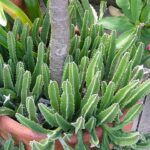 How to Pronounce the Word "Succulent": A Quick Guide
How to Pronounce the Word "Succulent": A Quick Guide4. How do I propagate succulents?
Succulents can be propagated through various methods such as leaf cuttings, stem cuttings, or by dividing offsets. Each method requires specific care and conditions, but with patience, most succulents can be successfully propagated.
If you want to read more articles similar to Fascinating Facts: Unveiling the Wonders of Succulents, you can visit the Miscellaneous category.


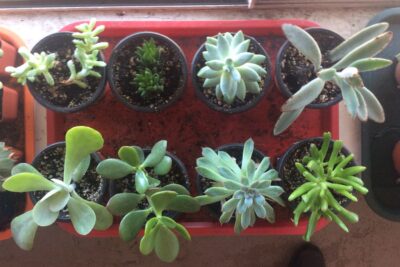



You Must Read